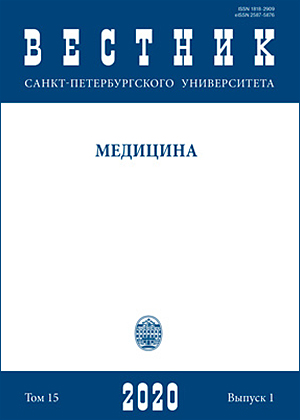The human placenta and aneuploidy — trisomies 21, 18, 13
DOI:
https://doi.org/10.21638/spbu11.2020.103Аннотация
The purpose of this research was to investigation the morphological features of human placenta with karyotyped trisomy 21, 18 and 13 chromosomes. The study included 50 placenta of fetuses in miscarriages pregnancy at 19–20 weeks, among them 10 placentas obtained as a result of induced abortions due to karyotyped trisomy 21 of the fetuses; 10 placentas obtained as a result of induced abortions due to karyotyped trisomy 18 of the fetuses; 10 placentas obtained as a result of induced abortions due to karyotyped trisomy 13 in the fetuses; 20 placentas obtained as a result of spontaneous miscarriages without any congenital defects and abnormal karyotype of the fetuses. As a result of the investigation, in placentas with karyotyped trisomies, a violation of villi branching was noted. With karyotyped trisomy 21, inhibition of angiogenesis and sclerosis of villi with proliferation of fibroblasts were revealed. In cells of chorionic villi with karyotyped trisomy 18, increased apoptosis was noted. In placentas with karyotyped trisomy 13 hydropic
changes in villus stroma and inhibition of angiogenesis were noted. As a result of the study, in placentas with karyotyped trisomies, a violation of villi branching was noted. With karyotyped trisomy 21, inhibition of angiogenesis and sclerosis of villi with proliferation of fibroblasts were revealed. In cells of chorionic villi with karyotyped trisomy 18, increased apoptosis was noted. In placentas with karyotyped trisomy 13 hydropic changes in villus stroma and inhibition of angiogenesis were noted.
Ключевые слова:
trisomy, placenta, immunohistochemical analysis, angiogenesis, apoptosis
Скачивания
Библиографические ссылки
References
Загрузки
Опубликован
Как цитировать
Выпуск
Раздел
Лицензия
Статьи журнала «Вестник Санкт-Петербургского университета. Медицина» находятся в открытом доступе и распространяются в соответствии с условиями Лицензионного Договора с Санкт-Петербургским государственным университетом, который бесплатно предоставляет авторам неограниченное распространение и самостоятельное архивирование.




